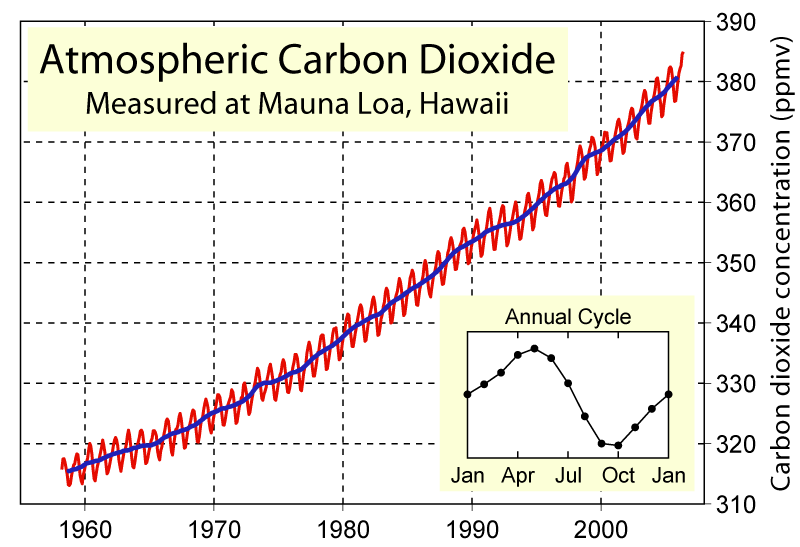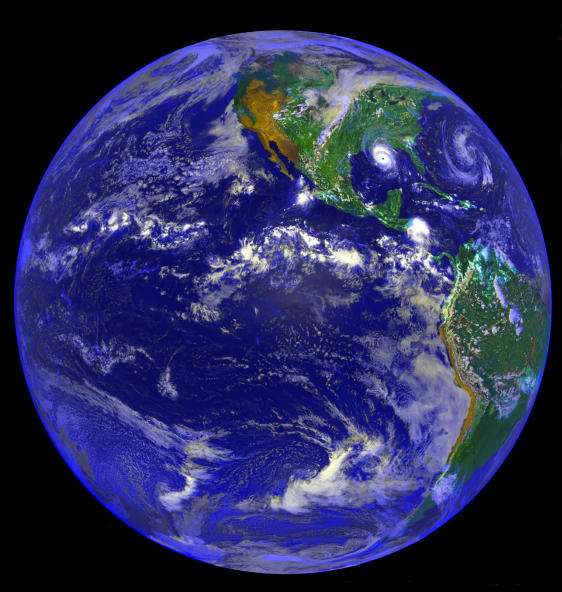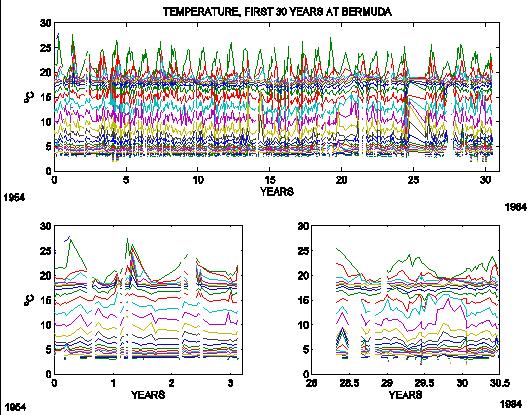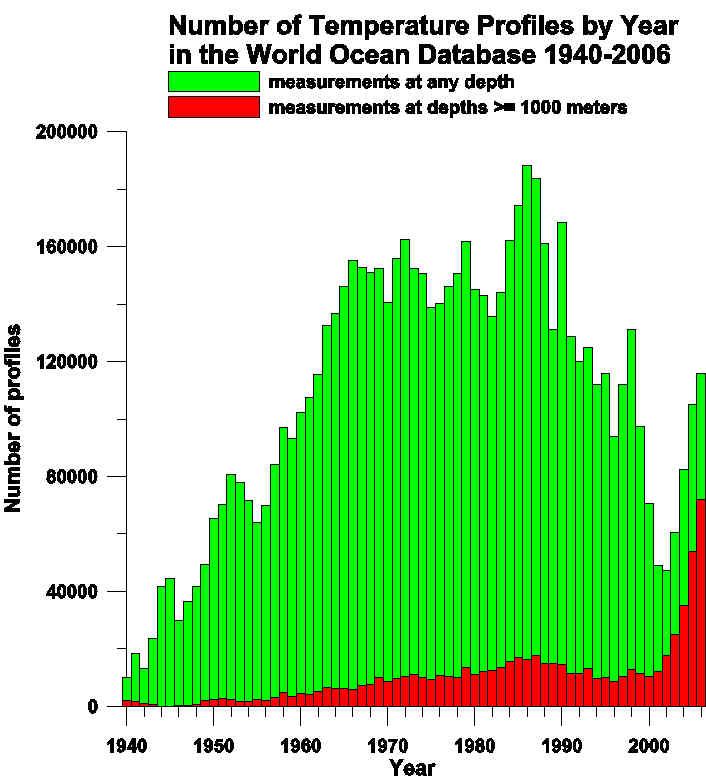The Endowed Observations
Meeting the challenge of sustained observations for climate
We can't understand the climate system without data.......
we won't have data unless we record it.
Read more
Much of the present uncertainty about our climate system is associated with the very brief records we have on temperature, pressure, humidity and rainfall. There is natural variability in the climate system along with a changing anthropogenic impact. How will we ever sort out these effects without good long-term records of the physical state of the Earth? We certainly could not test ideas about the physics of a 10 second surface wave with only 10 seconds of data. Nor can we sort out climate trends from oscillations with only a few years of data. The vast heat capacity of the oceans, 1100 times that of the atmosphere, imposes a centennial to millenial time scale on climate. Clearly, we won't be able to understand and predict climate without sufficiently long time-series observations at many locations around the globe.
Related Files
|
» Endowment_for_climate_observations_37844.pdf |
|
» orlando_oceansciences_2008_37743_37846.ppt |
|
» Endowed_Observation_37845.ppt |
Short records constrain what we can know about the climate system
The problem of studying the climate problem
Decadal and longer climate must be studied with multi-decadal time series
Read more
The shortness of the instrumental record is a very serious constraint on what can be learned about the workings of the climate system. We cannot we sort out decadal and centennial climate signals with only 10 years of data. We need continuous, accurate and consistent time series measurements of physical and chemical variables in the climate system that are maintained indefinitely. It is an intergenerational problem that requires new institutions.
Related Files
» orlando_oceansciences_2008_37743.ppt
Carl Wunsch's Power Point presentation at 2008 Ocean Sciences Meeting in Orlando, Florida.
A case in point: The Keeling Curve
The Keeling times series of atmospheric CO2 concentrations from Mauna Loa is constantly shown and even carved in marble in the halls of the National Academy of Sciences. However, its existance for the first two decades was very precarious, as continued funding was in constant jeopardy.
Read more
History of the Mauna Loa Time Series
•Begun by Keeling as part of IGY in 1958 with support from the Weather Bureau
•Seasonal cycle emerged in first year, confirmed by second years data
•Weather Bureau funding was cut in 1963, as long term rise in CO2 was just emerging.
•NSF funding was secured till 1973, when concerns arose that it was too “routine”
•Constant battle for funding with NSF through the 70’s
•NSF would not support “routine monitoring”
•NOAA and DOE provide 80% of NSF funding in 1979 if he agreed not to apply again. (Or “calibrated reviewers” would be found if he were unwise enough to re-apply)
•DOE funding promised for 2 years (1982) but Reagan DOE shake-up disturbed this arrangement.
•NSF again for 1983 (new program manager but still no “routine monitoring”)
•NOAA trying to take over Mauna Loa record but methods did not agree.
•NOAA and DOE for 1984
•1985 – DOE/Oak Ridge but the proposal had to promise “two discoveries per year”
•DOE funding cut after two years, but restored by Admiral Watkins. Continued to 1994. NOAA since then.
•DOE decided that “Research on the global carbon cycle will be redirected towards focused efforts related to terrestrial carbon processes” Fortunately, Keeling was able to argue for such relevance.

The intergenerational challenge of climate monitoring
We have few human institutions with the requisite longevity
How does one sustain open-ended measurements and model scrutiny when the result will be of greatest interest to future generations? Existing infrastructure is grossly inadequate to that end.
Read more
• US universities, hundreds of years;
• The Hudson’s Bay Company, 200 years.
Governments have changing priorities and a poor record for sustaining observations
Consider the number of temperature profiles collected in the world ocean over the last 70 years. (figure-->)
Read more
The maximum numbers were reached in 1986, when the US Navy deployment of expendable temperature profilers for antisubmarine warfare peaked during the cold war. Only the recent establishment of the ARGO profiling float array has reveresed the downward trend in profile numbers. It has to be recognized that government interests are generally short term, changeable and subject to political and economic pressures. It is naive to think that government can be trusted to sustain the necessary observations for centennial time scales, few governments have lasted that long.
New Institutions are needed to address the climate monitoring challenge
We propose that a new private institution be established to specifically address the intergenerational problem of monitoring the climate system.
Read more
The idea is outlined in our paper in the December 2007 issue of Oceanography Magazine. ("Long-term Observations: Endowments and New Institutions" D. J. Baker, R. W. Schmitt, C. Wunsch, Oceanography, Vol. 20, No. 4, p 10-14, 2008.) We envision an independent endowed funding organization whose mission is to assure the continuity of key time series observations of the climate system. It could play for climate science the role that the Howard Hughes Medical Institute does for medical research. It will take people with a truly long term vision to fund and establish such an institute, but the cost of about $1 billion is modest considering the size of the global economy and the central importance of Earth's climate to the future of humanity.
Related Files
We welcome your input
If you like our idea, do please contact us at:
| D. James Baker | djamesbaker@comcast.net |
| Ray Schmitt | rschmitt@whoi.edu |
| Carl Wunsch | cwunsch@mit.edu |
Read more
Related Files
» Article in "Proceedings of the National Academy of Sciences"
Wunsch, C., R. W. Schmitt and D. J. Baker, 2013. Climate change as an intergenerational problem. Proceedings of the National Academy of Sciences. 110 (12) 4435-4436.
» Article in "Oceanography"
Baker, D. J., R. W. Schmitt, C. Wunsch, 2007. Long-term Observations: Endowments and New Institutions. Oceanography, 20 (4), 10-14.


